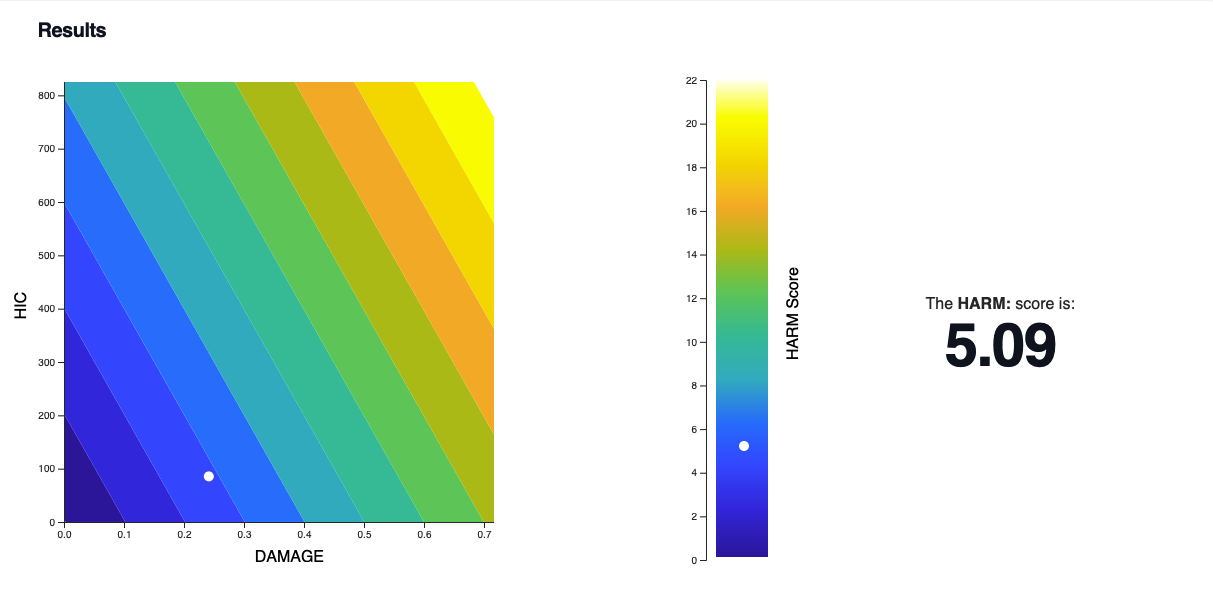Measuring HARM
HARM (Head Acceleration Response Metric)
HARM is an injury metric that uses rotational and translational head kinematics to assess the relative severity of head impacts. It is used in a football helmet safety assessment such that lower values of HARM indicate a less severe head impact (Bailey et al., 2020). The HARM score is comprised of two kinematic-based metrics; the Head Injury Criterion (HIC) and the Diffuse Axonal Multi-Axis General Evaluation (DAMAGE):
HIC (Head Injury Criterion)
- HIC is based on the magnitude and duration of linear head acceleration and has been used in helmet and automobile safety assessments (Versace 1971). The current application evaluates HIC over a time window of 15 milliseconds.
DAMAGE (Diffuse Axonal Multi-Axis General Evaluation)
- DAMAGE combines the magnitude, duration, and direction of angular head acceleration to estimate the maximum strain occurring in the brain during a head impact (Gabler et al., 2018). DAMAGE is based on the displacements of a 3DOF coupled multibody model that is tuned to estimate maximum principal strain from a Finite Element brain model.
Additional resources for calculating HARM can be found here.



